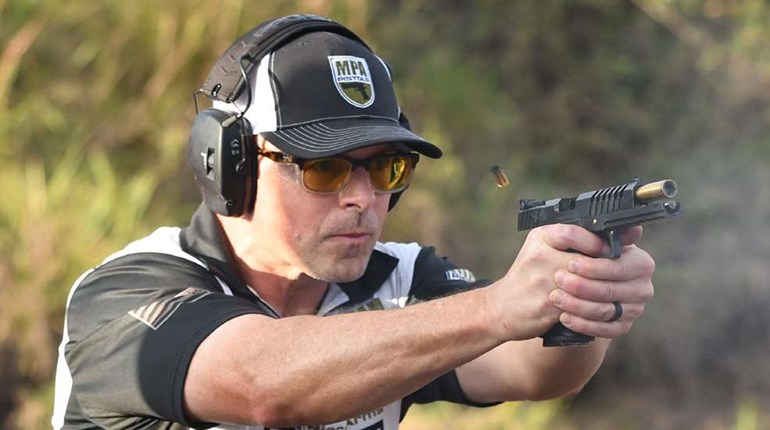
In the early days of my trying to develop the skills needed to shoot well, above the high score of our agency’s firearms qualification, I sought the guidance of tier-one government assets and competitive grandmasters alike. Many of them offered common advice such as bring stability to alignment and press careful so as to not disturb that alignment, develop good mechanical and visual process, stay mentally focused and such, all of which proved to be tremendously useful.
However, when it came to personal specifics of grip, stance, trigger press and the like, the more personal, the fewer generic recommendations. Why?
Because everyone is different. We all have different hand sizes—large, medium, small—hand strength, arm length, eyesight—20/200 versus 20/10—eye-hand coordination, talent and discipline.
Aside from such generic recommendations, what specifics can you focus on to develop a signature grip, personal hold and precise fire control?
Signature Grip
If you measure from about mid-forearm and forward to your fingertips to include your entire hand, all of that area is used primarily for grip.
You’ve heard many different pieces of advice referencing this gripping part of your body. “Grip it and rip it!” “Hold on as tight as you can with both hands!” “Use 75 percent of strength from your support hand and 25 percent from your strong hand.” “Keep both thumbs up.” “Don’t use your thumbs at all!” “Use 100 percent support hand only and zero pressure from your strong hand other than the trigger press.” The list goes on.
The problem is that although these may work for the person dispensing their advice, perfectly fitting their specific body type and structure, it may not fit yours at all, not even a little bit.
Rather than try to implement what fits another body type, develop your own signature grip that allows you to accomplish a specific task. Another way to look at it is, instead of trying what works for someone else to accomplish a certain task, reverse engineer it to find out what it takes you to accomplish the desired task.
For example, you want to be able to make a head shot at the 3-yard line in 1 second or less. Ok, great, now what kind of a grip do you need to accomplish that task? You need to figure it out yourself by trial and error. What works and what doesn’t work? You are most certainly welcome to exhaust the plethora of suggestions and recommendations offered by others, but ultimately, you’re only going to figure it out by feel and experience.
Hold Control
Measuring from the same mid-forearm position going the other way up through the elbows and shoulders to the upper torso stopping at your gun belt can be considered ‘structural’ which is utilized primarily for stabilizing your signature grip with muzzle-target alignment.
You’ve heard a lot of discussion about ‘grip and stance’, but you really don’t hear too many granular details about building sound structural support based on your specific body type. The NRA has an integral training component called "hold control," which is critical to stability of the muzzle through the duration of alignment and post-engagement fire control. It is a tremendous starting point for your skills development. However, only you can determine what level of hold control it takes for you to accomplish a specific task.
For example, you want to be able to make a head shot at the 25-yard line in under 2 seconds. OK, great, you understand the concept of hold control, but what is that amount needed for your body type? You need to figure it out by trial and error, what works and what doesn’t work for you. It is recommended that you apply the basics, but beyond that it is ultimately up to you to figure it out by feel and experience.
Fire Control
Fire control is your ability to press the trigger in such a manner as to not introduce any unnecessary movement (foreign input) into the firearm or add any lag time, such as visual over-verification, or introduce anything else that will detract from efficiency, thus impacting your speed or accuracy.
You’ve heard a lot on how to “manipulate the trigger”, but you really don’t hear too much about the technology behind establishing a sound trigger press based on your specific body type. Exact hand size, finger length, eye-hand coordination and many other physiology factors contribute to the efficiency and quality of your fire control.
You can run any number of drills out there, reference volumes on how to mechanically isolate your trigger press and fire the perfect round. However, only you can determine the precision it takes for you to accomplish a specific task.
For example, you want to place six rounds in an A-box on a USPSA target from the holster at the 10-yard line in under two seconds. OK, great, you know how to generically manage fire control, but what is the exact amount necessary for your body type? You need to figure it out by trial and error, what works and what doesn’t work for you. As with grip and structure you are most certainly welcome to exhaust the plethora of recommendations offered, but ultimately, to make it all work specifically for your body type you’re only going to crack that code with feel and experience.



































